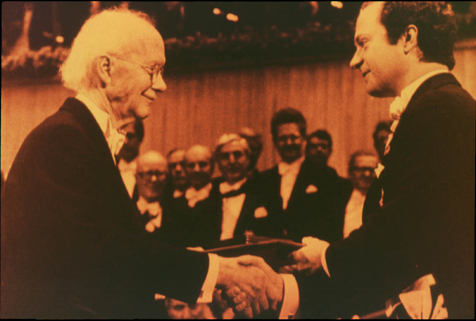
Faculty Research 1980 - 1989
Epidermal growth factor receptors in spontaneous ovarian granulosa cell tumors of SWR-derived mice.
Document Type
Article
Publication Date
1989
Keywords
Cell-Division: de, Epidermal-Growth-Factor-Urogastrone, Female, Granulosa-Cell-Tumor: an, pa, Mice, Ovarian-Neoplasms: an, pa, Receptors-Epidermal-Growth-Factor-Urogastrone: an, ge, RNA-Messenger: an, SUPPORT-NON-U-S-GOVT, SUPPORT-U-S-GOVT-P-H-S
First Page
477
Last Page
482
JAX Location
1903
JAX Source
Int J Cancer 1989 Sep 15; 44(3):477-82.
Abstract
Epidermal growth factor (EGF) receptor binding properties were examined in spontaneous ovarian granulosa cell (GC) tumors from SWR and SWR-derived strains of mice. EGF binding was measured at room temperature in tissue homogenates from GC tumors and normal ovaries from adult randomly cycling mice. GC tumor tissue displayed significantly increased EGF binding and 2 receptor populations (R1 and R2). Normal ovarian tissue appeared to have only one receptor population with a dissociation constant (KD) similar to the R1 (high-affinity) receptor in GC tumors. In subsequent experiments, GC tumor and normal granulosa cells from immature mice were analyzed in primary cultures for EGF binding, immunofluorescence microscopy for receptors, and cell proliferation. After 24 hr in culture, the GC tumors bound 10-fold more EGF/micrograms protein than did normal granulosa cells. GC tumor cells, but not normal granulosa cells, showed specific immunofluorescence when reacted with a polyclonal antibody to mouse EGFR. During 96 hr in culture, GC tumor cells, but not normal cells, showed a significant proliferative response to EGF. In conclusion, the EGF binding capacity is markedly increased in GC tumor cells and the proliferation data suggest that this growth factor supports tumor growth in the SWR model system.
Recommended Citation
Tennent BJ,
Beamer WG,
Shultz LD,
Adamson ED.
Epidermal growth factor receptors in spontaneous ovarian granulosa cell tumors of SWR-derived mice. Int J Cancer 1989 Sep 15; 44(3):477-82.

